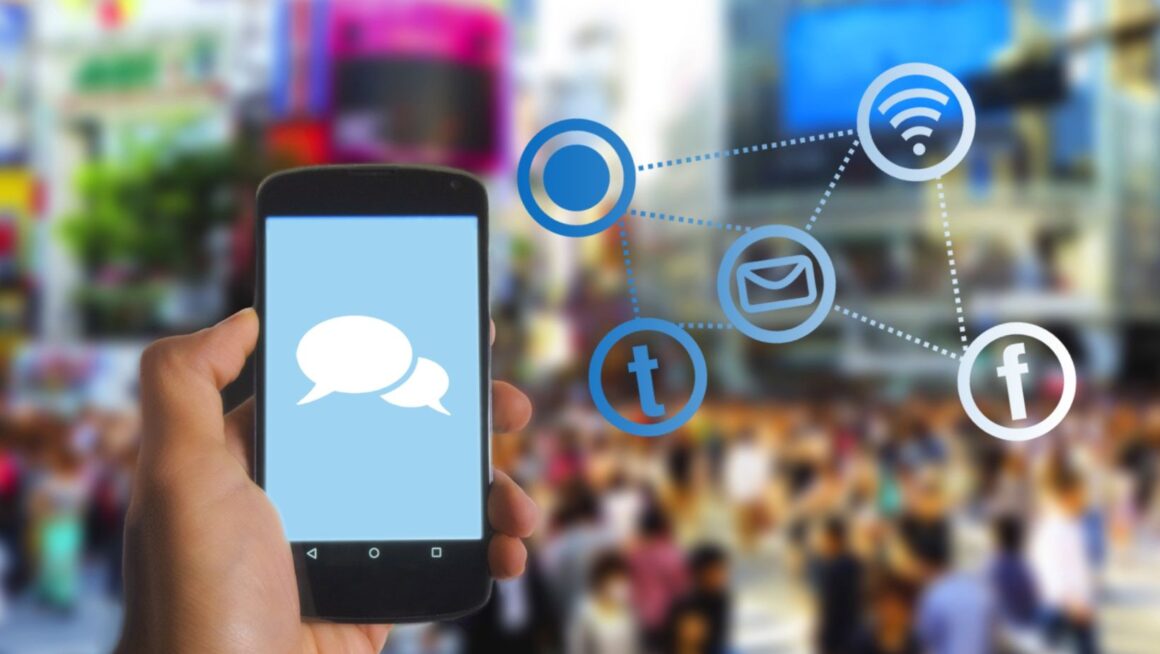
In today’s fast-paced digital world, technology has revolutionized the way we communicate. From instant messaging to video calls, the impact of technology on communication is profound. It has broken down barriers of time and distance, allowing people to connect effortlessly across the globe.
With the rise of social media platforms and messaging apps, staying in touch with friends, family, and colleagues has never been easier. The convenience of sending a quick text or email has transformed the speed and efficiency of our interactions.
Impact of Technology on Communication
From Letters to Instant Messaging
 Communication technology has drastically evolved over the years. The progression from handwritten letters to instant messaging has significantly impacted how people connect with each other. In the past, individuals relied on postal services to send and receive messages, which could take days or even weeks to reach the intended recipient. With the advent of instant messaging platforms, such as WhatsApp, Messenger, and Slack, communication has become instantaneous.
Communication technology has drastically evolved over the years. The progression from handwritten letters to instant messaging has significantly impacted how people connect with each other. In the past, individuals relied on postal services to send and receive messages, which could take days or even weeks to reach the intended recipient. With the advent of instant messaging platforms, such as WhatsApp, Messenger, and Slack, communication has become instantaneous.
Social media platforms have revolutionized the way people communicate and share information. Platforms like Facebook, Twitter, Instagram, and LinkedIn have created virtual spaces where individuals can connect with others, share updates, and engage in conversations. These platforms have become vital tools for staying in touch with friends, family, and colleagues, allowing users to communicate through posts, comments, likes, and direct messages.
Impact of Smartphones on Daily Communication
Enhanced Connectivity and Accessibility
Smartphones have seamlessly integrated into people’s lives, serving as constant companions that keep individuals connected at all times. With the advent of smartphones, communication has become more instantaneous and convenient. Users can easily reach out to anyone across the globe with a simple tap on their device, fostering real-time interactions that transcend geographical boundaries.
Smartphones have revolutionized the way people stay connected, enabling not only voice calls but also video calls, text messages, and various online messaging apps. These devices have made it easier for individuals to share moments, thoughts, and updates with friends, family, and colleagues instantaneously, strengthening relationships by bridging any communication gaps that may arise.
Shifts in Communication Etiquette
 The pervasive use of smartphones has led to significant shifts in communication etiquette. In today’s digital age, where smartphones are omnipresent, there has been a noticeable change in how individuals interact with each other. The constant presence of smartphones has blurred the lines between personal and professional communication, leading to an “always-on” culture where responses are expected instantly.
The pervasive use of smartphones has led to significant shifts in communication etiquette. In today’s digital age, where smartphones are omnipresent, there has been a noticeable change in how individuals interact with each other. The constant presence of smartphones has blurred the lines between personal and professional communication, leading to an “always-on” culture where responses are expected instantly.
Moreover, the brevity and immediacy of communication through smartphones have altered traditional norms of politeness and formality. Text messages, emojis, and abbreviations have become the norm, often replacing lengthy emails or formal letters.
Technology’s Role in Business Communication
Virtual Meetings and Telecommuting
 Virtual meetings have become a cornerstone of modern business communication, enabling teams to connect in real-time, share information, and make decisions swiftly. Platforms like Zoom, Microsoft Teams, and Skype have made it possible for employees from diverse geographical locations to participate in meetings, leading to improved productivity and reduced travel costs.
Virtual meetings have become a cornerstone of modern business communication, enabling teams to connect in real-time, share information, and make decisions swiftly. Platforms like Zoom, Microsoft Teams, and Skype have made it possible for employees from diverse geographical locations to participate in meetings, leading to improved productivity and reduced travel costs.
Telecommuting, also known as remote work, has gained popularity due to advancements in technology. Employees can now work from anywhere with an internet connection, allowing for greater flexibility and work-life balance. This shift towards remote work has been accelerated by the COVID-19 pandemic, highlighting the importance of technology in enabling seamless communication and collaboration even in challenging circumstances.
Global Collaboration and Network Expansion
The advent of digital communication tools has amplified global collaboration efforts, breaking down traditional barriers to connectivity. Businesses can now partner with organizations worldwide, share resources, and expand their networks effortlessly. Cloud-based platforms and project management tools facilitate collaboration across borders, fostering innovation and driving business growth.
Moreover, technology has enabled businesses to tap into a diverse talent pool from different parts of the world. By leveraging video conferencing, file sharing, and instant messaging applications, organizations can recruit top talent regardless of their location, fostering a more inclusive work environment and driving creativity through diverse perspectives.
